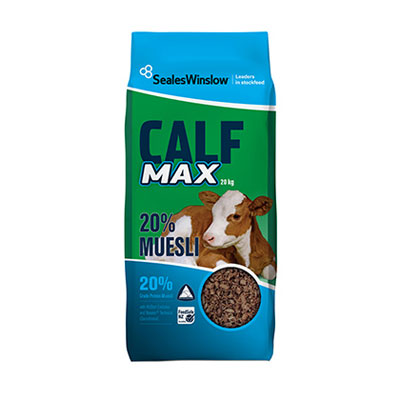Calf Rearing Advice
Calf Rearing Front and Centre
Calf rearing counts among the farm disciplines that allow a degree of flexibility. Aspects such as feeding and weaning strategies are therefore often based on personal preference, or what works best alongside the many other roles and responsibilities on the farm
Regardless of your regime, there’s one critical success factor to be aware of, namely “consistency of approach”.
You’re well advised to give your calves the same level of care, from the day they’re born until they’re weaned and in the paddock. The basics are good draught-free housing, clean water and quality feed (without signs of deterioration or a whiff of mustiness).
The focus on consistency is particularly important in matters of nutrition. The first and most important building block is good-quality colostrum. Its impact cannot be overstated; it delivers essential vitamins, minerals and immunoglobulins, all of which build immunity to disease and help to minimise health issues. SealesWinslow ruminant nutrition expert, Wendy Morgan, emphasises that colostrum should be fed as early as possible (ideally within the first six hours) and for at least four days, after which time you may move onto milk or calf milk replacer.
But liquid feed is only one part of the recipe!
As future ruminants, calves need to be introduced to solid feed very early on to ensure optimal development of their rumen. This is an important detail because the rumen (more specifically its papillae) determines how well nutrients can be absorbed.
Muesli and/or pellets, in addition to some hay or straw for roughage, are a great feed combination during the first few weeks in a calf’s life.
So, what should you look out for in feed composition?
First and foremost, look for nutrient-dense feed without so-called “fillers”. Wendy’s recommendation is to simply check the label or ask your rep. Aim for a high metabolisable energy level of 12.5 – 13 MJ/kg. What’s more, it should come only from quality ingredients. “Waste from lolly, chocolate or biscuit manufacturing can end up in calf feed because t’s cheap. But it doesn’t add any nutritional value beyond sugar and some starch. It also makes it difficult to achieve a consistent product, because the waste itself is quite variable. We therefore avoid it.”
Secondly, be careful to select a feed with the right protein content. Pellets with 20% crude protein, for instance, are specifically formulated for the needs of the very young calf, while the 16% equivalent is designed for older calves that are already getting some protein from pasture.
Once again, it pays to closely examine what’s on offer because, as Wendy explains, proteins aren’t created equal. “Ideally you want your feed to contain a high level of amino acids that help the calf grow lean tissue.” These amino acids come from quality plant ingredients such as soya bean, cottonseed, sunflower or canola.
Her final advice is to take a moment to evaluate the perception that feeding high levels of milk to calves is a cheaper option than buying pelleted feed. She recommends you “make sure that your decision is based on sound figures rather than assumptions or beliefs.” Even in the current below-average payout scenario, you might be surprised what you find when you do the sums. Chances are, you’ll keep the milk in the vat.

Calf 20% Muesli 20kg
A textured muesli with 20% crude protein and includes the SealesWinslow exclusive NuStart. The protein is sourced from a range of quality vegetable proteins to maximise lean tissue growth.

